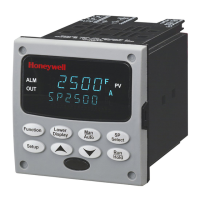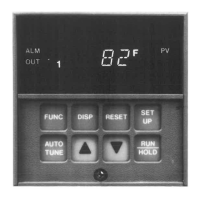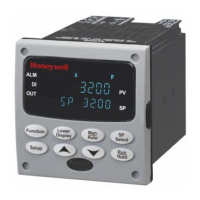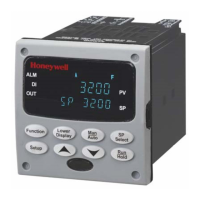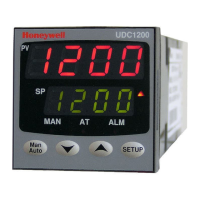Function Prompt
Selections or Range
of Setting
Parameter Definition
PV It represents the value of the
Process Variable.
PV = Input XxRatioX + BiasX
Deviation Deviation (Process Variable Minus
Setpoint) represents –100 % to +100
% of the selected PV span in
engineering units.
Zero deviation will produce a center
scale (12 mA or 50%) output. A
negative deviation equal in
magnitude to the Auxiliary Output
High Scaling Factor will produce a
low end output (4mA or 0 %) output.
A positive deviation equal in
magnitude to the Auxiliary Output
Low Scaling Factor will produce a
high end output (20 mA or 100 %).
FOR EXAMPLE:
Input 1 = Type T High Thermocouple
PV range = –300 °F to +700 °F
PV span = 1000 °F
Deviation Range = –1000 °F to
+1000 °F
Auxiliary Output Low Scale Value =
0.0
Auxiliary Output High Scale Value =
1000
If PV = 500 °F and SP = 650 °F
then Deviation Display = –150 °F,
which is
–7.5% of the Deviation Range , so
Auxiliary Output = 50% – 7.5% =
42.5%
Output
Output represents the displayed
controller output in percent (%).
Cannot be used with
Three Position Step Control.
139
Chapter 4 - Configuration

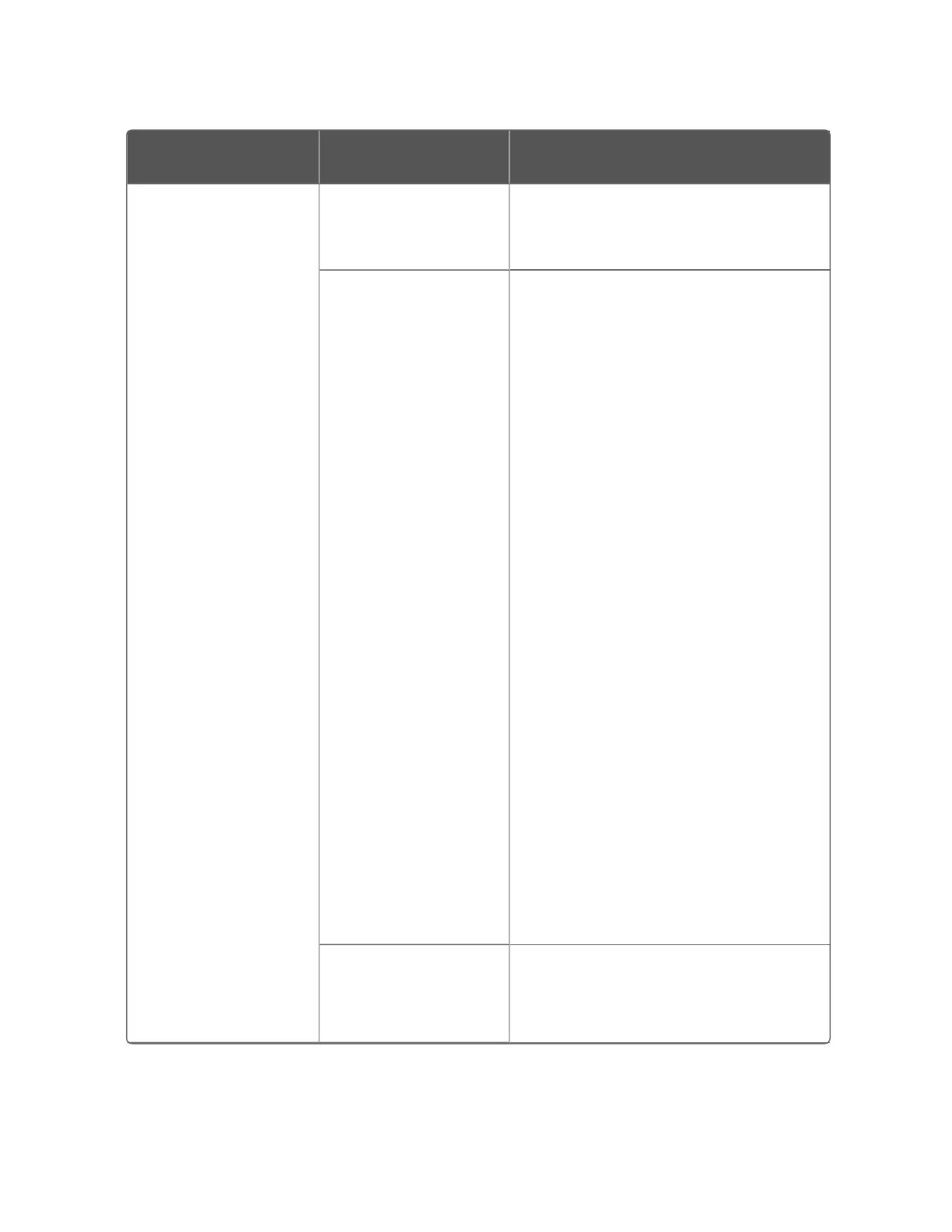